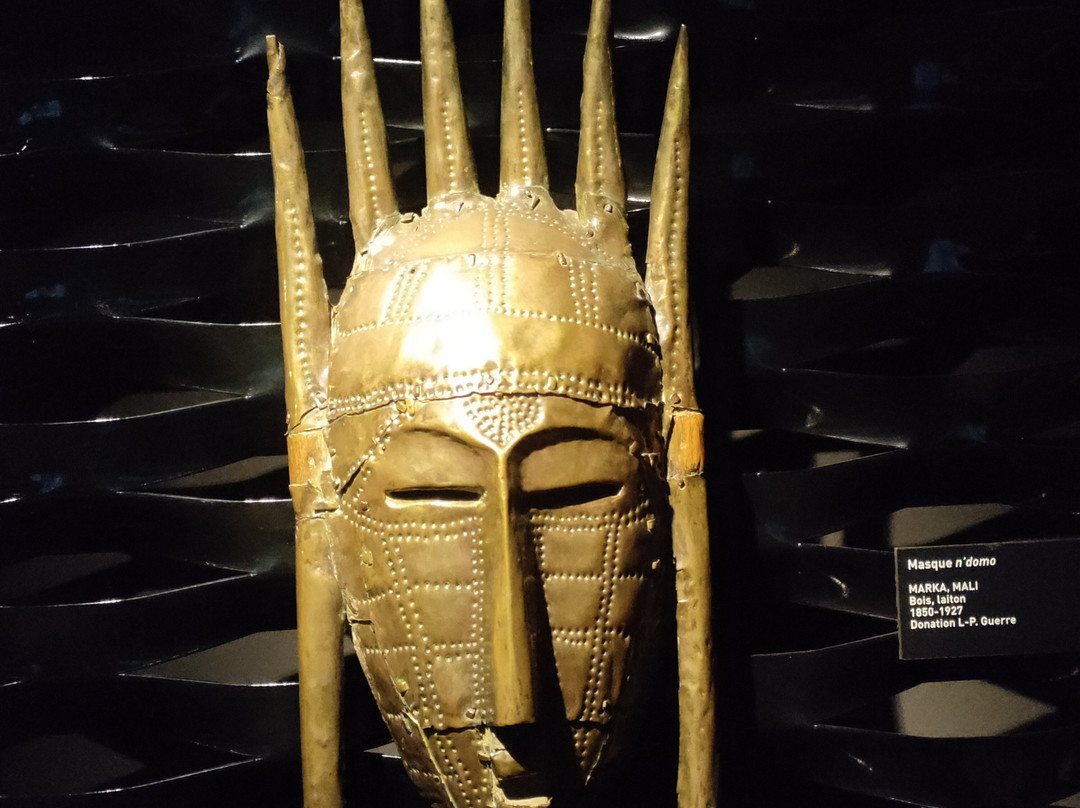的点评
Majestic building, decayed, then valorized and currently a highlight of the city of Marseille.
老救济院中心的点评
点评:The art historian Regis Bertrand, in an important paper on the Centre de la Vielle Charité (2003) wrote that the recent revaluation of this monument is a convincing proof of the fact that heritage isn't such thing that is given once and for all, but on the contrary is a “socially constructed concept”.
In fact, walking today through the majestic courtyard or along the elegant loggias of the building – which has been defined by a well-known guidebook as a sort of “Escurial of the poor” – or admiring the central church, an important baroque work by Pierre Puget, the visitor could hardly suspect that even in the 1950s it has been possible to suggest without causing scandal to demolish the entire complex, as an “irredeemable plague” of the neighborhood, possibly to “enhance” the view of the church. And instead this is exactly what happened.
Then fortunately, in the 1960s and 70s the opposite opinion prevailed, in favor of the restoration that then took place. Bertrand also reconstructs the reasoning that was at the basis of the recovery: “It's almost no longer conceivable that a large city in Mediterranean Europe doesn't have an important heritage, in particular ancient and baroque. Marseille thus enters a certain normality, that of the «cities of art»”.
Thus Marseille has come to add to its catalogue of attractions this building, an outstanding document of the policies – not only French, but European – of assistance and control of beggars in the early modern era.
When Bertrand wrote, much work still had to be done before the Panier district was satisfactorily refurbished. Today that the work is substantially done, the district and the Centre are in my opinion enhanced by each other.
During our visit we focused on one of the two permanent museums that were created in the Centre as part of the enhancement: the Museum of African, Oceanian, and Amerind Arts (MAAOA). In fact, having to choose for reasons of time, it seemed more worthy of a visit to us, being defined as the only museum of its kind in France outside of Paris.
We were thus able to admire splendid collections, excellently displayed and illustrated, and which, as far as we understood, are mainly due to the legacies of three great local collectors.
We left the museum in awe of the collections, and in general of how this imposing building, a highlight of the city of Marseille, has been enhanced.
In fact, walking today through the majestic courtyard or along the elegant loggias of the building – which has been defined by a well-known guidebook as a sort of “Escurial of the poor” – or admiring the central church, an important baroque work by Pierre Puget, the visitor could hardly suspect that even in the 1950s it has been possible to suggest without causing scandal to demolish the entire complex, as an “irredeemable plague” of the neighborhood, possibly to “enhance” the view of the church. And instead this is exactly what happened.
Then fortunately, in the 1960s and 70s the opposite opinion prevailed, in favor of the restoration that then took place. Bertrand also reconstructs the reasoning that was at the basis of the recovery: “It's almost no longer conceivable that a large city in Mediterranean Europe doesn't have an important heritage, in particular ancient and baroque. Marseille thus enters a certain normality, that of the «cities of art»”.
Thus Marseille has come to add to its catalogue of attractions this building, an outstanding document of the policies – not only French, but European – of assistance and control of beggars in the early modern era.
When Bertrand wrote, much work still had to be done before the Panier district was satisfactorily refurbished. Today that the work is substantially done, the district and the Centre are in my opinion enhanced by each other.
During our visit we focused on one of the two permanent museums that were created in the Centre as part of the enhancement: the Museum of African, Oceanian, and Amerind Arts (MAAOA). In fact, having to choose for reasons of time, it seemed more worthy of a visit to us, being defined as the only museum of its kind in France outside of Paris.
We were thus able to admire splendid collections, excellently displayed and illustrated, and which, as far as we understood, are mainly due to the legacies of three great local collectors.
We left the museum in awe of the collections, and in general of how this imposing building, a highlight of the city of Marseille, has been enhanced.
翻译:艺术史学家雷吉斯·伯特兰 (Regis Bertrand) 在一篇关于 Vielle Charité 中心的重要论文 (2003) 中写道,最近对这座古迹的重新评估有力地证明了遗产并非是一劳永逸的东西,相反,它是一种“社会建构的概念”。
事实上,今天,走过雄伟的庭院或沿着建筑优雅的凉廊——一本著名的旅游指南将其定义为一种“穷人的避难所”——或欣赏皮埃尔·普吉特 (Pierre Puget) 的重要巴洛克风格作品——游客几乎不会怀疑,即使在 20 世纪 50 年代,也有人提出拆除整个建筑群而不引起丑闻,称其为社区的“不可挽回的灾难”,可能是为了“改善”教堂的景观。而事实恰恰如此。
幸运的是,在 20 世纪 60 年代和 70 年代,相反的意见占了上风,支持当时进行的修复。Bertrand 还重述了修复的依据:“地中海欧洲的一座大城市没有重要的遗产,尤其是古代和巴洛克风格的遗产,这几乎是无法想象的。因此,马赛进入了某种常态,即‘艺术之城’。”
因此,马赛将这座建筑添加到其景点目录中,这是一份杰出的文件,记录了近代早期对乞丐的援助和控制政策——不仅是法国的,也是欧洲的。
Bertrand 写道,在 Panier 区得到令人满意的翻新之前,还有许多工作要做。如今,这项工作已经基本完成,我认为,该地区和中心区相互促进。
在我们参观期间,我们重点参观了作为扩建项目的一部分在中心建立的两个永久性博物馆之一:非洲、大洋洲和美洲印第安人艺术博物馆 (MAAOA)。事实上,由于时间原因,我们不得不做出选择,但它似乎更值得我们参观,因为它被定义为巴黎以外法国唯一的此类博物馆。
因此,我们能够欣赏到精美的藏品,这些藏品的展示和插图都非常出色,据我们所知,这些藏品主要归功于三位伟大的当地收藏家的遗产。
离开博物馆时,我们对藏品感到敬畏,总的来说,这座宏伟的建筑是马赛市的亮点,如今得到了扩建。
事实上,今天,走过雄伟的庭院或沿着建筑优雅的凉廊——一本著名的旅游指南将其定义为一种“穷人的避难所”——或欣赏皮埃尔·普吉特 (Pierre Puget) 的重要巴洛克风格作品——游客几乎不会怀疑,即使在 20 世纪 50 年代,也有人提出拆除整个建筑群而不引起丑闻,称其为社区的“不可挽回的灾难”,可能是为了“改善”教堂的景观。而事实恰恰如此。
幸运的是,在 20 世纪 60 年代和 70 年代,相反的意见占了上风,支持当时进行的修复。Bertrand 还重述了修复的依据:“地中海欧洲的一座大城市没有重要的遗产,尤其是古代和巴洛克风格的遗产,这几乎是无法想象的。因此,马赛进入了某种常态,即‘艺术之城’。”
因此,马赛将这座建筑添加到其景点目录中,这是一份杰出的文件,记录了近代早期对乞丐的援助和控制政策——不仅是法国的,也是欧洲的。
Bertrand 写道,在 Panier 区得到令人满意的翻新之前,还有许多工作要做。如今,这项工作已经基本完成,我认为,该地区和中心区相互促进。
在我们参观期间,我们重点参观了作为扩建项目的一部分在中心建立的两个永久性博物馆之一:非洲、大洋洲和美洲印第安人艺术博物馆 (MAAOA)。事实上,由于时间原因,我们不得不做出选择,但它似乎更值得我们参观,因为它被定义为巴黎以外法国唯一的此类博物馆。
因此,我们能够欣赏到精美的藏品,这些藏品的展示和插图都非常出色,据我们所知,这些藏品主要归功于三位伟大的当地收藏家的遗产。
离开博物馆时,我们对藏品感到敬畏,总的来说,这座宏伟的建筑是马赛市的亮点,如今得到了扩建。





此点评仅代表旅行者个人的主观意见,并不代表TripAdvisor以及其合作方的意见。
关于我们
|新闻动态
|商务合作
|会员中心
|业主中心
|常见问题
|意见反馈
|联系我们
|营业执照
© 2025 Tripadvisor 版权所有。
使用条款 |隐私政策 |网站工作原理
部分照片由 VFM Leonardo 提供。
* Tripadvisor不是旅行社,也不是旅游预订服务代理商。我们提供免费、客观、公正的旅游资讯服务。 (显示更多)
TripAdvisor LLC 既不是预订代理商,也不是旅游运营商,不会向网站用户收取任何服务费。 按照规定,在 Tripadvisor 发布机票价格、游览和旅行套餐的合作伙伴(航空公司、旅行提供商及预订代理商),其标价须包含所有费用和附加费用。 例如, 机场出入境税费、消费税与其他服务费、手续费、杂费及附加费用。 当您向我们的某个合作伙伴进行预订时,请务必查阅他们的网站以了解当地行政部门要求的所有适用费用的具体情况。 除非另有说明,机票价格通常指的是一个人的价格(以人民币计)。
为方便起见,TripAdvisor LLC 根据从我们的预订合作伙伴获取的空房率计算每个酒店的均价。 对于游览和景点来说,所显示价格通常是每位成人的最低可用价格。 对于列出的任何旅行套餐或优惠,TripAdvisor LLC 无法保证任何特定的费率或价格。 此外,酒店均价每晚会更新,并以您的首选币种表示(使用现行汇率)。 由于这些已换算的价格是预估价格,因此,有关具体金额和币种请与预订网站进行核实。
此外,TripAdvisor LLC 无法保证我们网站上宣传的价格随时有效。 标价可能需要预订一定天数才能生效,或有不可用日期、使用条件或限制。
TripAdvisor公司对外部网站的内容一概不负责。优惠价格中不含税和其他费用。
ICP证:沪B2-20200433
沪ICP备20013175号
 沪公网安备31010502005427号
沪公网安备31010502005427号鹰程信息技术(上海)有限公司
货币/国家及地区
¥CNY
中国

